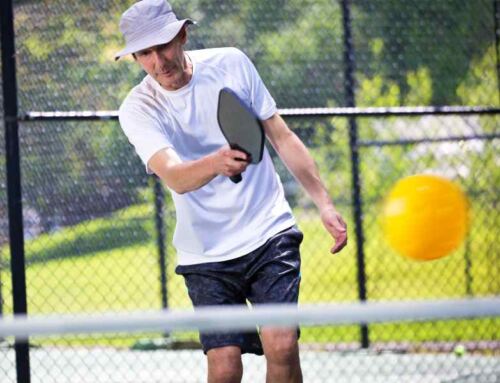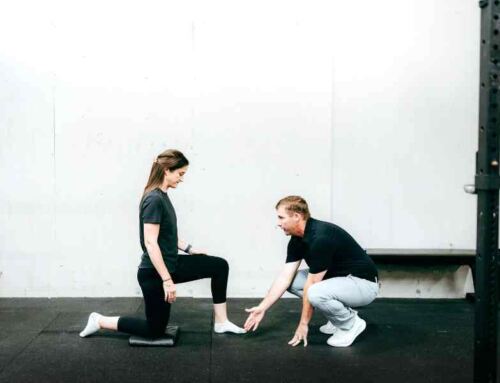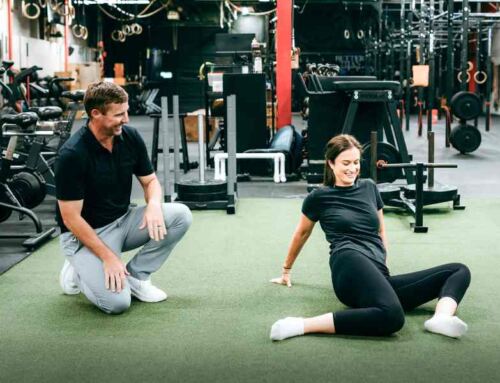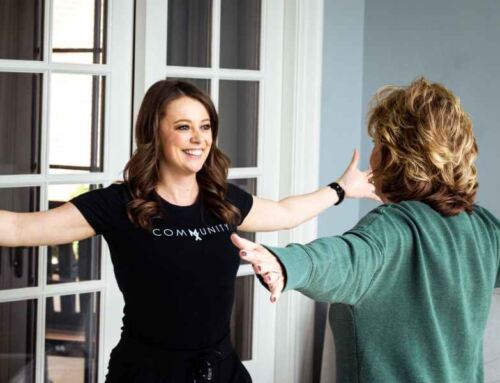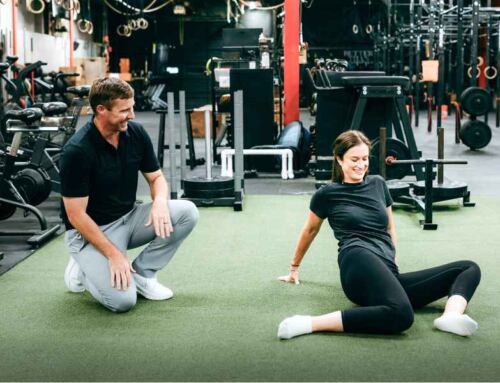The Athlete’s Roadmap to ACL Rehab Success
ACL rehab is a challenging journey that tests you mentally, physically, and emotionally. Even though this injury is common, don’t be misled into thinking the recovery is a simple, “one size fits all” process. This guide is designed to help you navigate the road ahead, offering clarity and hope that you CAN come back stronger than before.
The journey begins the minute the injury happens, which can be a scary and uncertain time. The best-laid plans for your sports trajectory may feel like they’ve been flipped upside down, and the road ahead may seem foggy and bleak. But take heart—this roadmap will guide you, providing a clearer path and the assurance that recovery is possible.
You’re embarking on a new path. Along the way, you may face adversity, but remember, adversity is fertile soil for growth.
I’ve divided this guide into the phases of your journey leading up to, immediately after, and further ahead post-surgery. Each phase contains actions that will benefit you in your journey (Green Lights) and actions that will stifle it (Red Lights).
And a reminder: This guide is intended for informational purposes only and should not replace professional medical advice. Always consult with your healthcare provider or physical therapist before starting or modifying any rehabilitation program.
Let’s dive in!
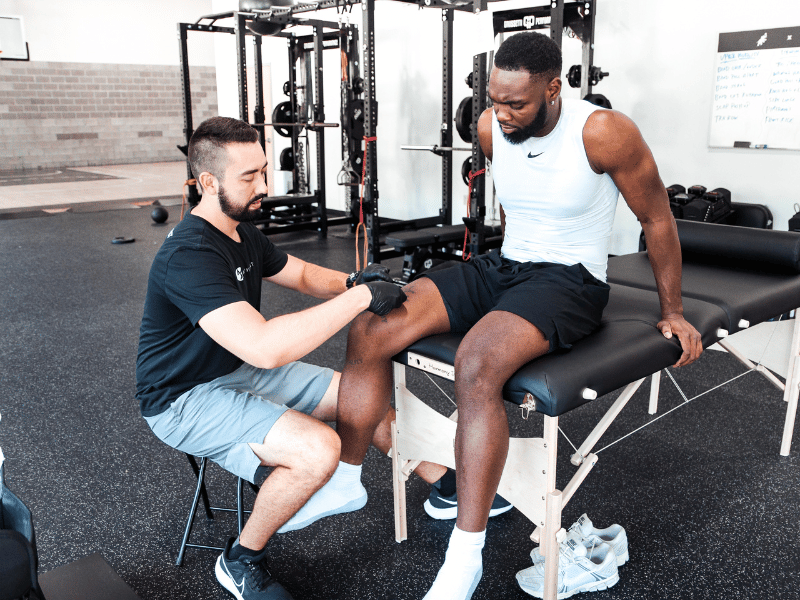
Phase 1: Pre-op (Time Before Surgery)
This is the time to prepare mentally and physically for the road ahead. Preparation leads to confidence, which is crucial for your journey.
Green Lights
- Go to physical therapy before surgery! Ensure that your knee is no longer swollen and you have full range of motion before your operation. This will make the post-op process smoother.(1).
- Pre-op physical therapy helps you build a rapport with your physical therapist, which is essential as you two will be a team for the next 9-12 months.
- Your physical therapist will answer questions about the post-op experience and introduce you to exercises that will be vital in the early rehab stage.
- Find a physical therapist experienced in ACL rehab. Not all therapists have a strong background in this area, so doing your homework is important.
- Ensure your physical therapy clinic has the right equipment to get you stronger than before—look for free weights, machines, and squat racks. If the heaviest weight there is a 5-pound dumbbell, consider finding a new clinic.
Red Lights
- Skipping pre-op PT and going into surgery with swelling and limited range of motion.
- Not researching whether your physical therapist frequently works with ACL patients, often affectionately referred to as “ACLers.”
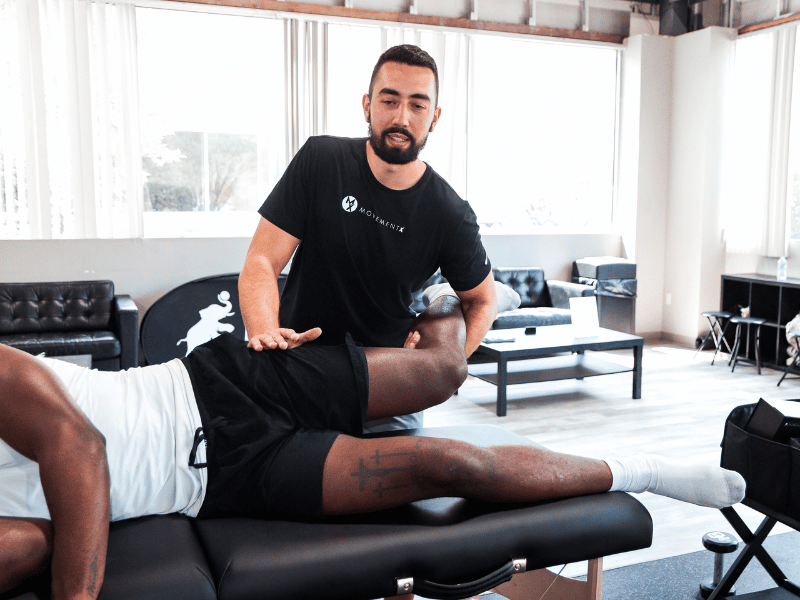
Phase 2: Early Post-Op (1-2 Months)
There’s difficult terrain ahead, proceed with vigilance! This part of the journey sets the stage for the entire rehab process. Time to lock in and get to work. Let’s look at some key points of this stage:
Green Lights
- Focus on reducing swelling. Ice, elevation, and compression will be your best friends.
- Bend and extend your knee early and often, staying within your pain tolerance.
- Prioritize quad strengthening. Neuromuscular Electrical Stimulation (NMES) can help re-establish your quad contraction, which is crucial (2). If NMES isn’t available, practice squeezing your quad frequently to help re-establish function.
- Blood flow restriction (BFR) training is an excellent way to mitigate quad muscle loss early in the process. Learn more about BFR from Dr. Dan Alcorn.
Red Lights
- Ignoring the mental side of recovery. The early post-op stage is tough—don’t hesitate to talk with a sports psychologist or mental health professional. Mental health and physical health go hand in hand.
- Skipping your home PT exercises. These need to be done frequently because while the intensity is low, the volume is key.
- Ditching your crutches too early. Crutches help offload the knee and reduce swelling—there’s no rush to give them up and pick up bad gait (walking) mechanics.
- Becoming inactive. Training your upper body in a safe manner is a way to keep your head (and body) in the game. Also, there are a lot of ways to safely load the non-surgical limb! In fact, when done properly, which can have crossover benefits to your surgical limb (3).
For additional information on early post-op recovery, check out Dr. Derek Garza’s blog.
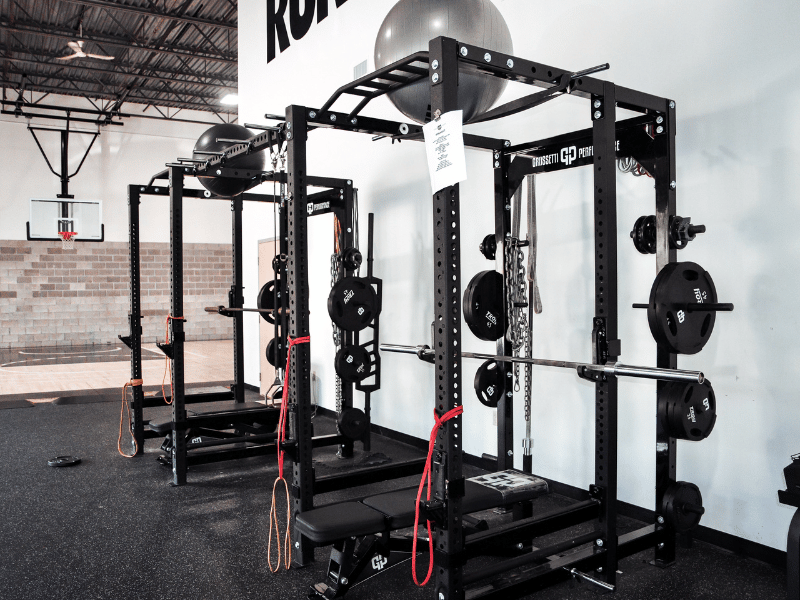
Phase 3: Mid-Stage (3-6 Months)
Keep moving, you’re picking up steam!
You’re doing a great job! Moving around likely feels easier, but don’t worry if you’re feeling stuck—everyone progresses at different rates. Remember, don’t compare yourself to others; focus on your own journey forward.
There’s a lot that occurs during this next stage.
Green Lights
- Continue laying a strong strength foundation, which will intensify as you go. Include both single and double-leg exercises and don’t fear early knee extensions (4). Strong quads are essential.
- Begin a low-level plyometric progression before any jogging. Yes,
before. The plyometric exercises will help prepare the knee for the stresses placed on the limb during jogging. - Jogging often begins around 4 months, but don’t start just because you hit that timeline—tests should be done by your PT to determine readiness.
- If you have more than a 30% difference in your knee extensor (quad)
isometric strength, you may want to consider delaying jogging (5). Knee
extensor torque to body weight ratio should also be factored into the return to jogging equation (Don’t worry, your PT will handle the math stuff). - Being able to complete exercises such as single leg pogo hops prior to jogging is also an important piece of the “to jog or not to jog” decision due the nature of the activity (6).
- Start very slow with the jog progression and follow a specific plan that incrementally builds upon itself in a progressive manner. If you go from jogging to sprinting in a week, I promise your knee will not be a happy camper.
- I would highly recommend building comfort with jogging, then slowly
building up running speed for several weeks before considering any form of sprinting. - Prior to sprinting, deceleration drills should be dosed in appropriately. Build your brakes first!
Red Lights
- Lack of progression in exercises since early post-op is a red flag. If your exercises haven’t increased in intensity, it might be time to find a new physical therapist.
- Continuing to jog with pain or swelling present. This is not a time to push through pain and swelling. If there is persistent pain and swelling, it’s time to go back to the drawing board.
- Please do not assume that pain or swelling with jogging/running will “just go away with time.” You need to address the underlying cause. It often stems from your knee joint not being prepared for the stresses of the task or the quad strength difference between your two limbs.
- Neglecting the brain’s role in recovery! An ACL injury affects more than just the knee (7). Incorporate tasks that challenge visual and auditory reactions. Challenge the brain by processing different stimuli, for example, dribbling a basketball while verbally calling out numbers or colors being held up. There are endless possibilities. You and your PT can get creative.
Big Red Light
Here is the biggest one: Do not return to sport if you have been cleared at 6 months based on time-frame alone! There is a much higher risk of secondary injury in patients who return to sport too early (8).
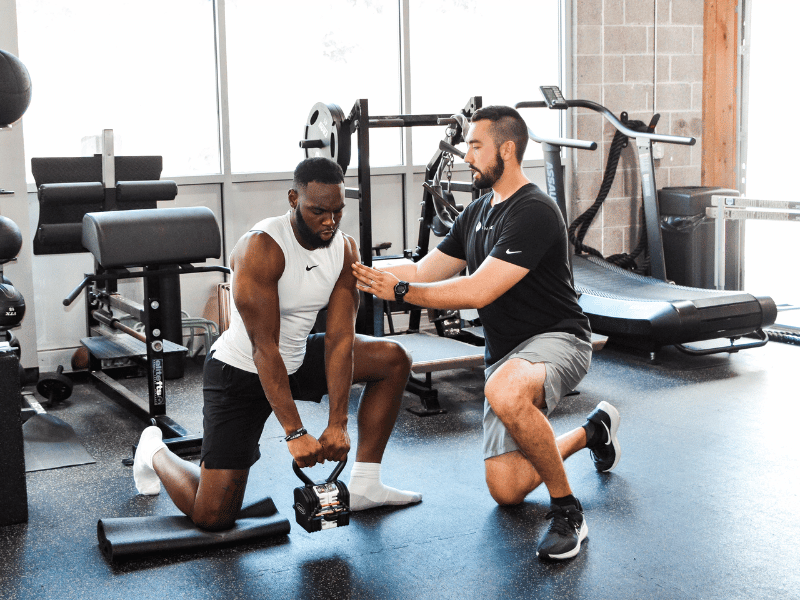
Phase 4: Late Stage (6-9 Months)
You’re getting there. Keep sight of how far you have come.
As you progress, it’s easy to forget where you started. While we don’t need to dwell on the past, take a moment to acknowledge all of your hard work. If you’re feeling burnt out, consider a “deload” or “reset” week to rejuvenate and finish strong.
Green Lights
- Slowly reintroduce more activity under the guidance of your PT.
- Keep up with strength training—this remains crucial.
- Have fun with more advanced drills like deceleration, sprinting, plyometrics, and change of direction exercises.
- Reassess your quad strength! This is a major one.Your PT should use a device to get specific numbers on how much force your quad can generate compared to your non-surgical side.
- This is a debated topic, but before full participation in sport, meaning live play without restrictions, quad strength differences between limbs there should be no more than 10%, ideally less than 5%. (9).
- Undergo a full battery of testing with your physical therapist to determine sport readiness. Don’t forget to also include mental checkpoints, such as the ACL-RSI.
There is not a gold standard battery of tests for return to sport readiness at this point in time. Your PT may include tests such as a T-test, 505 agility test, single leg hop test variations (single leg vertical hop is a great one), among others. Be sure to test quad strength.
Red Lights
- Rushing back to activity without proper testing isn’t a recipe for success.
- Stopping strength training and focusing only on sport skills or running isn’t ideal—keep lifting!
- Don’t forget to keep an eye on your knee range of motion, even if it was fully restored within the first few weeks/months. Sometimes you can lose a few degrees of range or motion with the increase in activity. Weekly or bi-weekly range of motion re-checks are a good idea even this far out from surgery.
- Stopping PT early because you feel “good enough” can be deceiving—testing will help ensure you’re truly ready.
- Be prepared for changes in insurance coverage. I would estimate about 2 out every 3 patients I work with will have issues with insurances coverage at or before this point. This is something to expect and prepare for in most cases. No, it’s not ideal. No, I do not agree with it, but it is a reality of the ACL rehab process in the typical insurance model.
- Don’t listen to those around you who may pressure you to return by a certain date. I know this is easier said than done, but you know yourself best. Communicate how you are feeling with your physical therapist and support system, they should be a strong advocate for you in these situations.
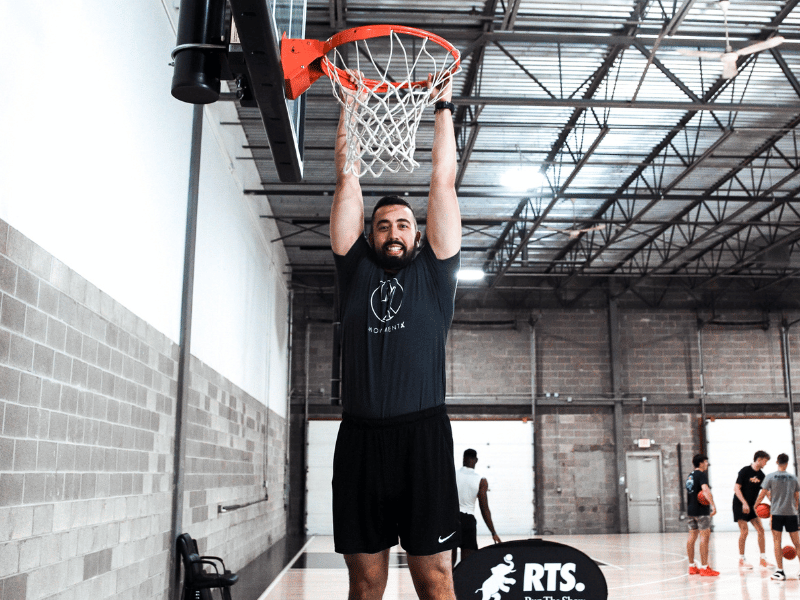
Phase 5: Late Stage / Return to Sport (9-12 Months)
Take a deep breath and enjoy the view.
You can see your destination—it’s within arm’s reach. Before you get there, keep these points in mind:
Green Lights
Be patient with yourself as you return to sport, and follow a gradual reintroduction plan approved by your surgeon and PT.
Follow a progressive re-introduction to full sport participation (10): Here’s an example:
You’re cleared by surgeon and physical therapist for non-contact practices.
- Non-contact participation in half field/court drills at practice: 2+ weeks
- Non-contact participation in full field/court drills at practice: 2+ weeks
Ensure you have full clearance from your surgeon and physical therapist prior to full contact)
- Full participation in half field/court play at practice: 1-2+ weeks
- Full participation in practices: 2+ weeks
- Reintroduction into game play. Limit time in-game < 50%: 1-2+ weeks
- Full return to game play (10+ week ramp up time prior to full return)
Why follow this?
Practice is often against a familiar opponent and in a familiar setting. Keeping practice to half court/field to begin limits some variables. Games are higher stakes, and the intensity/speed of play is greater. Work your way up.
This is not intended as a protocol to follow. It is an example that highlights the importance of gradual reintroduction.
Red Lights
- Don’t feel pressured to do it all in your first game back. It’s a marathon, not a sprint.
- Don’t stop strength training (see a theme?) Yes, even in-season, if possible, continue to keep your body strong in ways other than just playing your sport.
- Don’t be afraid to reach out to your PT if something doesn’t feel right. Keep an open line of communication with your healthcare team.
- Don’t play with fear. Every time you play a sport, there is an inherent risk of injury. If you have gone through the rehab process with diligence and have been cleared based on a thorough battery of tests, be confident in your knee.
Conclusion
This guide doesn’t cover every nuance of the ACL rehab process, but I hope it’s given you a clearer picture of what to expect. If you have questions or need care, I offer in-person physical therapy in Pittsburgh, PA, as well as virtual coaching and physical therapy services.
Don’t go at it alone—reach out for support, and best of luck on your ACL journey!
References
- Giesche F, Niederer D, Banzer W, Vogt L. Evidence for the effects of prehabilitation before ACL-reconstruction on return to sport-related and self-reported knee function: A systematic review. PLoS One. 2020 Oct 28;15(10):e0240192. doi: 10.1371/journal.pone.0240192. PMID: 33112865; PMCID: PMC7592749.
- Toth MJ, Tourville TW, Voigt TB, Choquette RH, Anair BM, Falcone MJ, Failla MJ, Stevens-Lapslaey JE, Endres NK, Slauterbeck JR, Beynnon BD. Utility of Neuromuscular Electrical Stimulation to Preserve Quadriceps Muscle Fiber Size and Contractility After Anterior Cruciate Ligament Injuries and Reconstruction: A Randomized, Sham-Controlled, Blinded Trial. Am J Sports Med. 2020 Aug;48(10):2429-2437. doi: 10.1177/0363546520933622. Epub 2020 Jul 6. PMID: 32631074; PMCID: PMC7775613.
- Cirer-Sastre R, Beltrán-Garrido JV, Corbi F. Contralateral Effects After Unilateral Strength Training: A Meta-Analysis Comparing Training Loads. J Sports Sci Med. 2017 Jun 1;16(2):180-186. PMID: 28630570; PMCID: PMC5465979.
- Noehren B, Snyder-Mackler L. Who’s Afraid of the Big Bad Wolf? Open-Chain Exercises After Anterior Cruciate Ligament Reconstruction. J Orthop Sports Phys Ther. 2020 Sep;50(9):473-475. doi: 10.2519/jospt.2020.0609. PMID: 32867579.
- Buckthorpe M, Della Villa F. Optimising the ‘Mid-Stage’ Training and Testing Process After ACL Reconstruction. Sports Med. 2020 Apr;50(4):657-678. doi: 10.1007/s40279-019-01222-6. PMID: 31782065.
- Davies G, Riemann BL, Manske R. CURRENT CONCEPTS OF PLYOMETRIC EXERCISE. Int J Sports Phys Ther. 2015 Nov;10(6):760-86. PMID: 26618058; PMCID: PMC4637913.
- Piskin D, Benjaminse A, Dimitrakis P, Gokeler A. Neurocognitive and Neurophysiological Functions Related to ACL Injury: A Framework for Neurocognitive Approaches in Rehabilitation and Return-to-Sports Tests. Sports Health. 2022 Jul-Aug;14(4):549-555. doi: 10.1177/19417381211029265. Epub 2021 Jul 8. PMID: 34236003; PMCID: PMC9214902.
- Beischer S, Gustavsson L, Senorski EH, Karlsson J, Thomeé C, Samuelsson K, Thomeé R. Young Athletes Who Return to Sport Before 9 Months After Anterior Cruciate Ligament Reconstruction Have a Rate of New Injury 7 Times That of Those Who Delay Return. J Orthop Sports Phys Ther. 2020 Feb;50(2):83-90. doi: 10.2519/jospt.2020.9071. Erratum in: J Orthop Sports Phys Ther. 2020 Jul;50(7):411. doi: 10.2519/jospt.2020.50.7.411. PMID: 32005095.
- Grindem H, Snyder-Mackler L, Moksnes H, Engebretsen L, Risberg MA. Simple decision rules can reduce reinjury risk by 84% after ACL reconstruction: the Delaware-Oslo ACL cohort study. Br J Sports Med. 2016 Jul;50(13):804-8. doi: 10.1136/bjsports-2016-096031. Epub 2016 May 9. PMID: 27162233; PMCID: PMC4912389.
- Brinlee AW, Dickenson SB, Hunter-Giordano A, Snyder-Mackler L. ACL Reconstruction Rehabilitation: Clinical Data, Biologic Healing, and Criterion-Based Milestones to Inform a Return-to-Sport Guideline. Sports Health. 2022 Sep-Oct;14(5):770-779. doi: 10.1177/19417381211056873. Epub 2021 Dec 13. PMID: 34903114; PMCID: PMC9460090.
About the Author
Dr. Patrick Dumais is a physical therapist in Pittsburgh, PA. Over his career, he has helped many athletes return to their sports, hobbies, and everyday life stronger, happier, and healthier. With a focus on ACL rehab and a background in basketball, Patrick Dumais is your ideal partner in overcoming injury and getting back to what you love.



